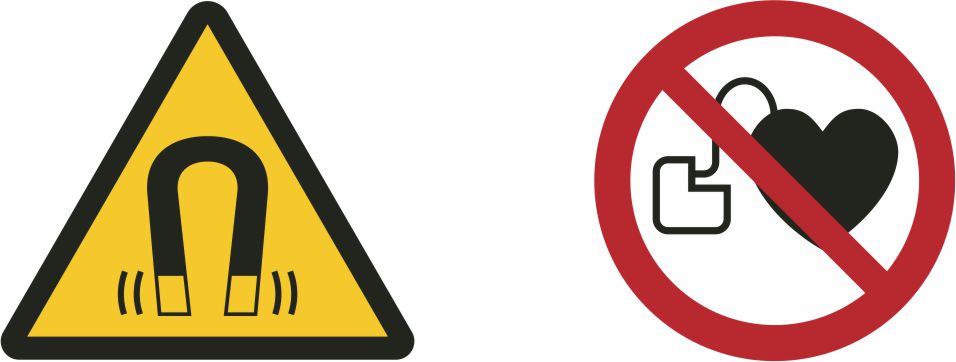Compressor motors
The frequency inverter cannot deliver voltage above the supply voltage. Therefore, the stator voltage cannot increase any further with higher inverter frequency. The magnetising current in the main inductance drops, the stator rotating field and torque are weakened.
This means that when raising the frequency above the synchronous speed, the voltage-frequency ratio U/f falls. Since the torque required by the compressor remains constant, the current consumption of the motor will increase (Operating characteristics of a compressor motor with reserve). Therefore, the motor should have adequate reserve (current / power) at supply frequency. The frequency / speed can be increased up to the maximum motor current (RMS – root mean square) (see maximum operating current on the name plate or in the Bitzer Software).

P: max. compressor power consumption
M: max. torque of the motor at compressor shaft
I: max. compressor current consumption
f: frequency (frequency inverter output)
U: voltage (frequency inverter output)
Standard motors
For common applications, Bitzer suggests using the standard motors 40S or 40P (Application range). They are very economical and have a large range of operation. The Bitzer Software indicates the standard motor for each compressor. Supply voltage is
- 400 V at 50 Hz resp.
- 460 V at 60 Hz.
LSPM Motors
Compressors equipped with a line start permanent magnet motor (LSPM motor) can be identified by the letters "U" and "L" added to the model designation (e. g. 6CTEU-50LK). The built-in permanent magnets generate a non-negligible magnetic field which, however, is shielded by the compressor housing.

Safety signs attached to the compressor
 WARNING
WARNING
Strong magnetic field!
Keep magnetic and magnetizable objects away from compressor!
Persons with cardiac pacemakers, implanted heart defibrillators or metallic implants: maintain a clearance of at least 30 cm!
Special voltage motors
If the motor is running at maximum operating current already at standard conditions, a special voltage motor may be useful in order to achieve a larger regulating range. It ensures that even above supply frequency, a constant voltage-frequency ratio U/f can be maintained. A constant torque is available over the entire application range.
Compressor and motor damage in case of exceeding speed!
Observe the upper speed limit of the compressor! See application range.
Depending on design and/or permitted speed range of the compressor, the preferrable motor option is (with regard to power supply 400 V/3/50 Hz):
- 40S: 230 V/3/50 Hz (+73% compressor current) at full motor torque – observe maximum permitted speed of the compressor! (following figure, graph ③)

①: 400 V/3/50 Hz
②: 400 V/3/60 Hz
③: 230 V/3/50 Hz
With this design, the operating current at graph ② is 1.2 times higher than in the case of 400 V/50 Hz; at graph ③ it is 1.73 times higher. This increases frequency inverter costs resp. the frequency inverter has to be chosen accordingly.
A standard motor allows the direct operation of the compressor on the power grid with contactors in case of a failure of the frequency inverter (emergency mode).